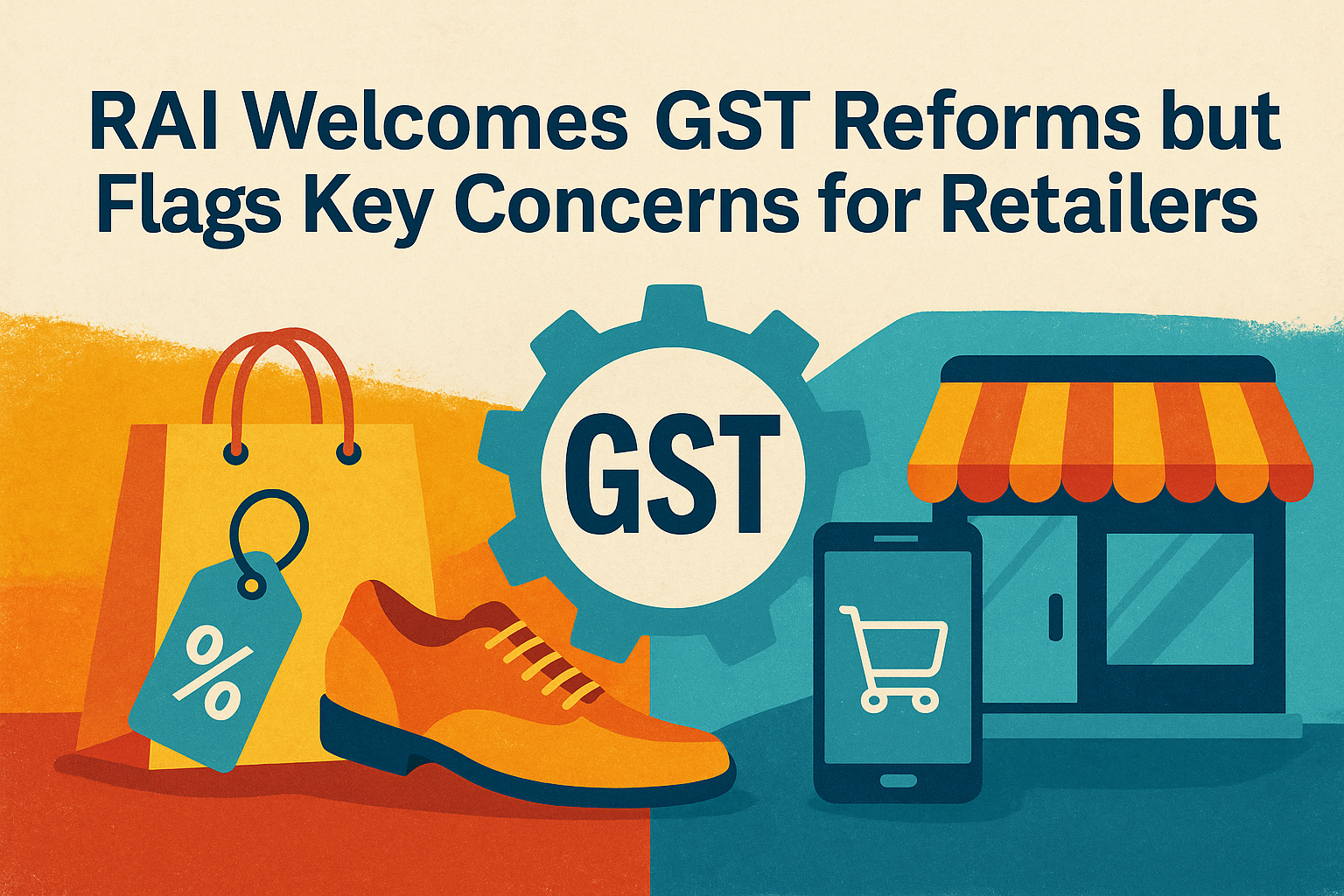The Retailers Association of India (RAI) has welcomed the government’s recent Goods and Services Tax (GST) reforms, calling them a decisive move toward a simpler, fairer, and more growth-friendly tax system. According to RAI, the reforms will not only strengthen the retail ecosystem but also lower consumer prices, encourage higher consumption, and improve ease of doing business—especially for small retailers and MSMEs.
One of the most celebrated changes has been the removal of the inverted duty structure across the textile value chain, a longstanding issue that created pricing imbalances. This correction, RAI noted, has brought greater clarity, balance, and predictability for the textile and apparel sector.
Yet, alongside its appreciation, RAI has raised four major concerns that it believes the government must address to ensure sustainable retail growth.
1. Structural Flaws in Price-Based GST Slabs
RAI has strongly objected to the price-based GST threshold system, which it says distorts natural market behavior. By creating artificial cut-offs, this slab structure encourages misreporting, compliance burdens, and grey-market activity.
For mid- and premium-priced products, the impact could be particularly harsh, discouraging domestic manufacturing and forcing consumers to downgrade purchases. According to RAI, such a framework undermines the government’s ‘Make in India’ initiative. The association has recommended moving towards a flat GST rate across product categories to eliminate distortions and encourage fair competition.
2. Garments and Footwear Above ₹2,500 in 18% Slab
The association expressed concern that garments and footwear priced above ₹2,500 attract 18% GST—a rate it considers unfair for middle-class affordability. This tax bracket, RAI argued, weakens demand for wedding apparel, winter clothing, artisan-crafted goods, festive attire, and other traditional categories that are often priced above this threshold.
To safeguard affordability and support organised retail, RAI recommends reducing GST on all garments and footwear to 5%, or at the very least, revising the price threshold to a more reasonable level.
3. Mobile Phones Still at 18% GST
RAI has also highlighted that mobile phones, essential in today’s digital age, continue to be taxed at 18%. The association insists that smartphones are not luxury items but crucial enablers of education, commerce, and connectivity.
By lowering GST to 5%, RAI believes affordability will improve significantly, accelerating India’s digital adoption and strengthening the government’s Digital India mission.
4. GST on Commercial Rentals
A long-standing concern for retailers, GST on commercial rentals remains pegged at 18%. RAI pointed out that renting is simply the right to use property, not a service or manufacturing activity, and that such properties are already burdened with state-level levies such as stamp duty, registration charges, and property tax.
The high GST rate results in blocked working capital, disproportionately affecting lakhs of small and medium retailers. To address this, RAI has renewed its call to reduce GST on commercial rentals to 5%, a move that would improve retail viability and reduce structural imbalances.
Looking Ahead
RAI’s response to GST reforms reflects both optimism and caution. While the recent reforms mark a step toward fairness and simplification, the association’s concerns reveal the complexities of taxation in India’s diverse retail landscape. By addressing these four issues—structural flaws in slabs, high taxes on garments/footwear, mobile phones, and rentals—the government can further strengthen the retail sector’s role as a driver of employment, consumption, and growth in the economy.
Feel free to share your experiences and insights in the comments below. Let’s continue the conversation and grow together as a community of traders and analysts.
By sharing this experience and insights, I hope to contribute to the collective knowledge of our professional community, encouraging a culture of strategic thinking and informed decision-making.
As always, thorough research and risk management are crucial. The dynamic nature of financial markets demands vigilance, agility, and a deep understanding of the tools at your disposal. Here’s to profitable trading and navigating the election season with confidence!
Ready to stay ahead of market trends and make informed investment decisions? Follow our page for more insights and updates on the latest in the financial world!
For a free online stock market training by Yogeshwar Vashishtha (M.Tech IIT) this Saturday from 11 am – 1 pm, please sign up with https://pathfinderstrainings.in/training/freetrainings.aspx
Experience profits with my winning algo strategies – get a free one-month trial with ₹15 lakh capital! – https://terminal.algofinders.com/algo-terminal
Disclaimer
This article should not be interpreted as investment advice. For any investment decisions, consult a reputable financial advisor. The author and publisher are not responsible for any losses incurred by investors or traders based on the information provided.


